Poland, 1978
The first installment of Doll Collection Dinners: Wildly fun adventures in the kitchen inspired by a collection of seventy-two dolls from around the world.
My dad bought this doll for me in Warsaw in 1978. I was just three years old.
“I really don't know what led me to buy that first doll in Poland. I wanted to bring you home something and I guess a doll was just the logical gift,” he says.
He has never stopped traveling the world and the collection grew through my childhood to include over seventy dolls.
Here’s the story of why he went to Poland, what he ate there, where the adventure has led us.
How it started
My grandmother believed in the inherent value of a collection. She also loved to travel and whenever she ventured from her farm in Kentucky, she came home with salt and pepper shakers for her only daughter. That collection filled three shelves of a cabinet with glass doors that came crashing down on my aunt, age 15, requiring stitches on three parts of her leg. As an adult, my aunt never moved the salt and pepper shakers her own home in Florida. This may have left her mother a bit disappointed.
Ok, so that’s a little side-wander, but maybe you can to relate to some of the challenges of collecting literal, physical objects.
Back to my doll collection, and how it all started. In 1978, I was three years old when my father went to Warsaw, Poland. He was a young journalism professor and just starting to clue in to the opportunities an academic career might provide for international travel. He recently told me that he had considered being a foreign correspondent, but even though his mother loved to take roadtrips, he was still a farm boy from Kentucky without any sense of how to get into that game.
He worked at college papers and earned his degree and was in his third year of teaching when he learned that the International Communication Association would be holding its very first meeting outside the United states — in West Berlin. He submitted a paper and was accepted.
And that is where it all started.
Not only was this his first time leaving American soil, he went to divided Berlin and, to get there, traveled through a European history lesson with a tutorial in current affairs.
Dad flew into London, where transportation was in turmoil thanks to Irish “terrorists” and security risks were high. Aiming toward Germany, his train made it to the ferry, but at the port of Hook van Holland, he learned the Dutch rail system had been hijacked by Moluccan “terrorists,” who took fifty hostages to draw attention to the promises made and broken since their colonial-era loyalty. (Another side-wander here, but if you don’t know about this piece of post-colonial trauma, the Moluccan Islands in current Indonesia were the only place in the world that grew cloves and nutmeg, making them a prime destination and coveted land-prize during the infamous Age of Exploration. A treaty between the Dutch government and the Indonesian government was broken and Moluccans unilaterally declared a fully independent Republic of South Maluku. The powers that be didn’t find reason to acknowledge their secessionist republic.)
Dad made it from Holland to the border of East Germany, where guards got on the train and then no stops were made over the long stretch of tracks that ran through a special “corridor” connecting the world, and West Germany, with West Berlin. Berlin is hard to explain. Maybe you know, but if you don’t, I’ll just say that in the 1970s, it was a little island of the Wild West floating in a sea of Communism.
In Berlin, dad met people. He heard ideas and saw possibilities that changed his life. The high drama of this adventure sparked a wanderlust and a joy in exploring the world that has never quit.
I am his only daughter, his only child. I have memories of sitting on his bed under the eaves of the old house on Schreyer Road watching him pack. He likes to tease me still about the time I asked where he was going and he answered, “to Seattle.” I was just a little kid, so then I asked what color hair Attle had. The point is, I remember him packing and unpacking his bag, a simple canvas backpack I now own and actually still use. Imagine that.
When he came home, there was always a doll wrapped carefully in newspaper or tissue that had been tucked between layers of dress shirts and slacks. He went to Zimbabwe (1983) and Greece (1985), New Zealand (1986) and India (1987), The Virgin Islands (1988) and Korea (1994), and so many other places.
My doll collection grew.
How it was going
I left for college when I was 18 years old. I didn’t take the collection of dolls with me, though I did add a few dolls to it from my own world travels. Over seventeen years, the collection had expanded to include fine porcelains that were valuable and breakable. And there were a few ‘outliers,’ including gifts from people other than my dad and from places within the United States. All of these unique characters lived in a tall bookcase in the bedroom of my father and step-mother’s house, the room I stayed in when I visited. I always lingered a while at the doll collection, picking up my favorites to study the costumes and admire the workmanship. When my dad invariably asked, at then end of my stay, when I’d take my doll collection with me, I’d shrug evasively. I may have even grimaced because, truthfully, I had no idea what to do with this doll collection.
Then, in 2022, while visiting my dad and step-mother with my family over spring break, I once again found myself contemplating the quandary. The question of whether we’d be taking the dolls home with us hung in the air. My youngest daughter, who had just turned ten, lingered by the shelves with me, fingering the dolls with a little smile on her face.
Impulsively, without a plan, I started taking ‘portraits’ of each doll with my iPhone. It was fun and gave me ideas about how I could work creatively with the collection. My daughter was my photo assistant. She is the one who suggested we cook dinners from the countries. When I type that now, I wonder, is that really what happened? Did she really think of that? But she did, and I love her to pieces for it.
For the past year and a half, we have been ‘traveling’ around the world, one doll at a time, following in my father’s footsteps. It’s been a wild and evolving dinner party that has brought new recipes into our regular dinner rotation, given us the excuse to check out grocery stores and markets we had never visited before, left our pantry stocked with a few ingredients we may never use up, and opened a wellspring of endless curiosity.
The shower curtain world map in our bathroom has been an immediate resource, but I also picked up “The Travel Book: A Journey Through Every Country in the World” by Lonely Planet at our local thrift store, so we get the fast facts, as well as cultural highlights and advice about the best time of year to visit, with some stunning photos to accompany our meals. And to my delight, in many cases we know someone with a connection to the country who comes over to cook with us and share personal stories.
This has been a really great way to have fun with the collection. I appreciate that it is, and isn’t, about the tangible objects, now numbered and packed into bins in my basement. As a family, we are building layers of new meaning while peeling back others.
How it’s going
I’ve been sharing the cooking and eating adventures on Instagram and Facebook. I especially love a project that brings ideas into new realms, probes questions that deserve further thought, and opens conversations. When writing about things, I like connecting the dots to see where the lines point. So I asked my dad to tell me more about that first trip to Poland and anything he wanted to share about the doll or the collection.
He remembered the food. The conference in Warsaw was in a big hotel with a large dining area where everyone ate all their meals together. One evening, some of my dad’s new friends decided to leave the hotel in search of dinner out in downtown Warsaw. My dad said, “The food at the conference was adequate but monotonous.”
The next day, when dad asked about their experience at the restaurant, they reported that it had been a little disappointing. Even though the menu listed a variety of dishes, their choices were quite limited: They claimed to have no meat. It had all be diverted to “the big conference.”
In Poland in 1978, the Polish sausages that are now so easy to find where we live in Wisconsin were only available at foreign exchange stores and had to be bought with Western cash.
What we ate
For our first Doll Collection Dinner, we made haluski and sernik. Haluski is a simple and hearty dish of egg noodles, caramelized onions, and cabbage topped with slices of Polish sausage. Also a full stick of butter, plus salt and pepper. Yes, truly, it was delicious. Dessert was a hefty cheesecake called sernik that actually opened my mind to the worldly popularity of a treat I’ve honestly never cared much for but now can say I appreciate.
We listened to Chopin, a famous composer and pianist born in 1810 in Poland, and learned there is a wild herd of ancient European bison roaming the largest area of remaining primeval forests, in Poland. Of course, there’s more to this country with over 450 miles of coastline on the Baltic Sea. What do you know about Poland?
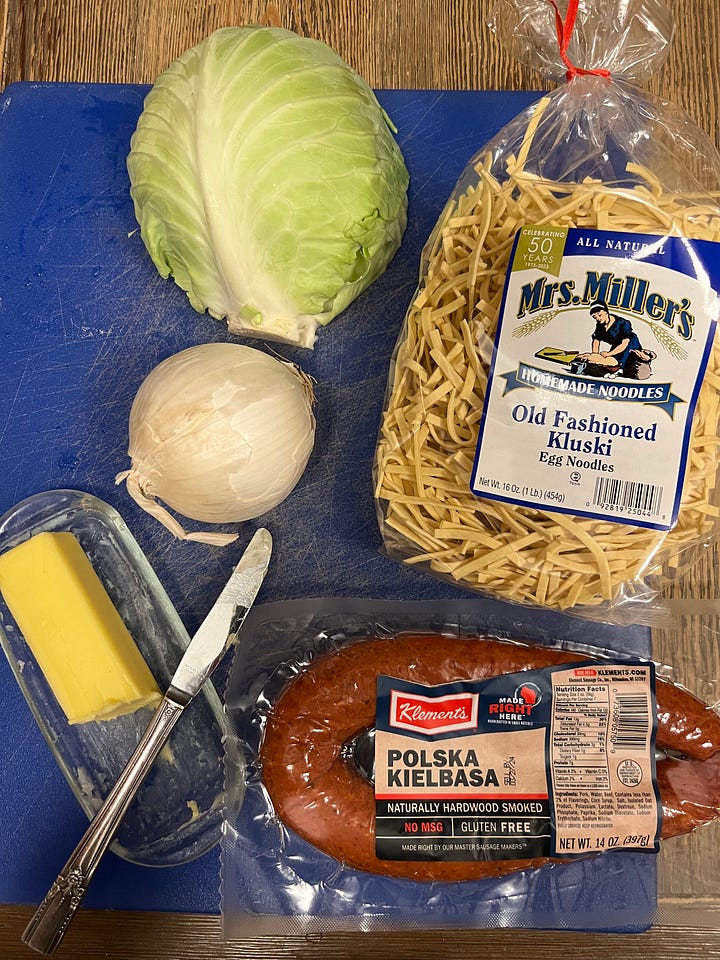
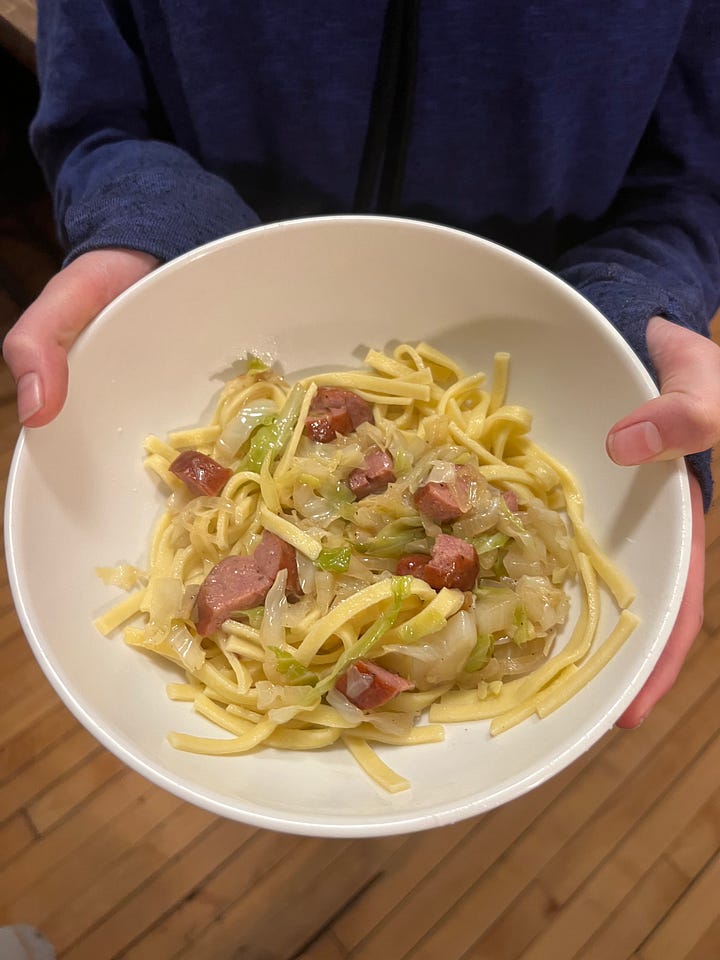
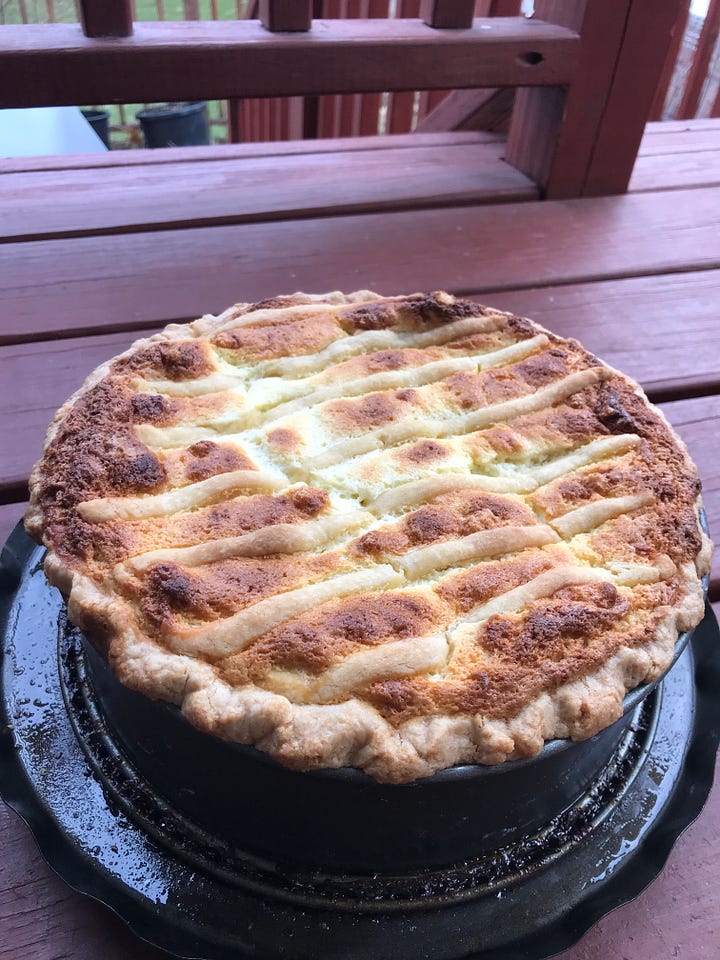
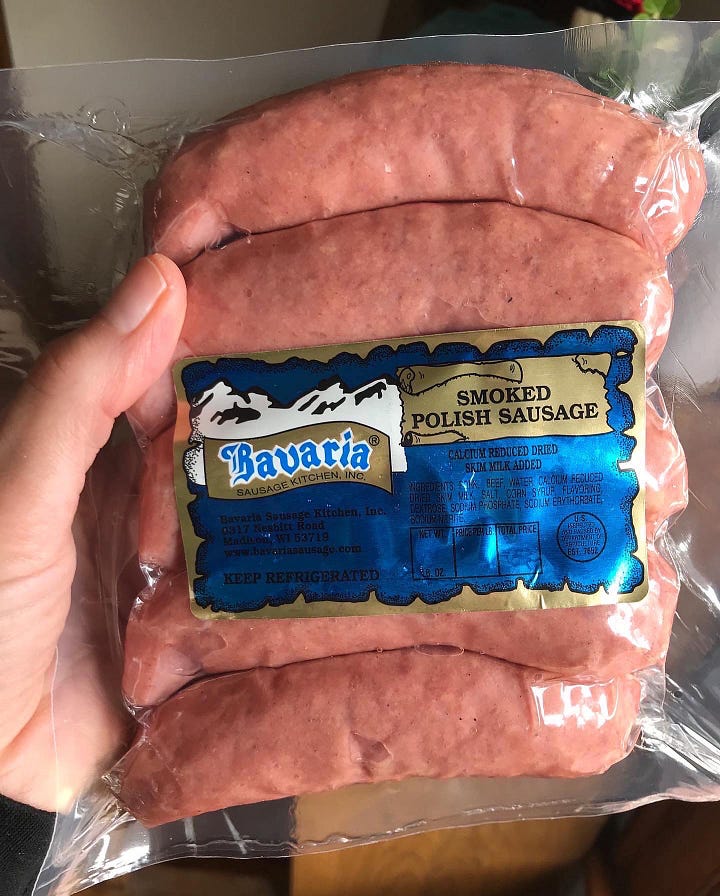




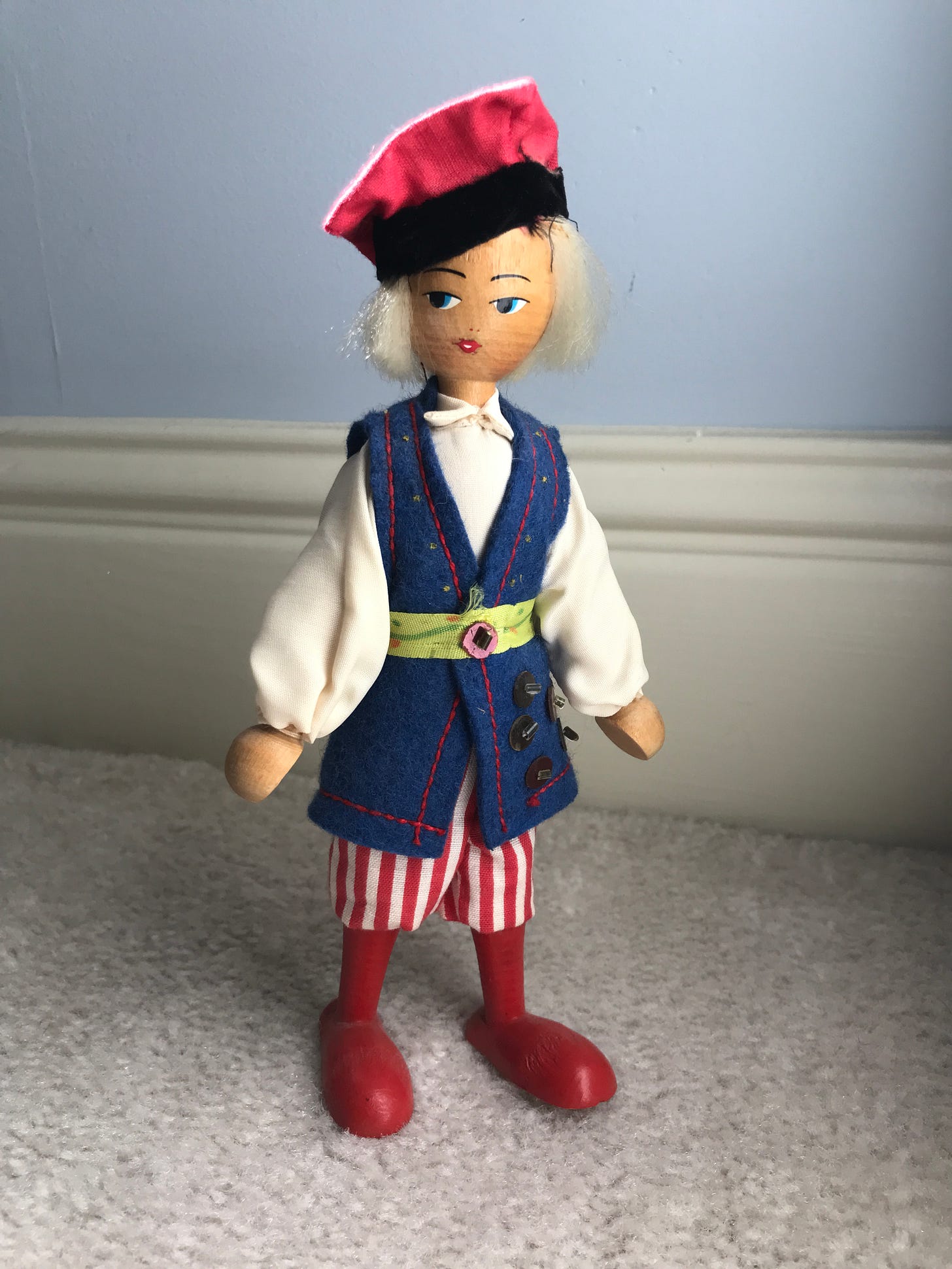
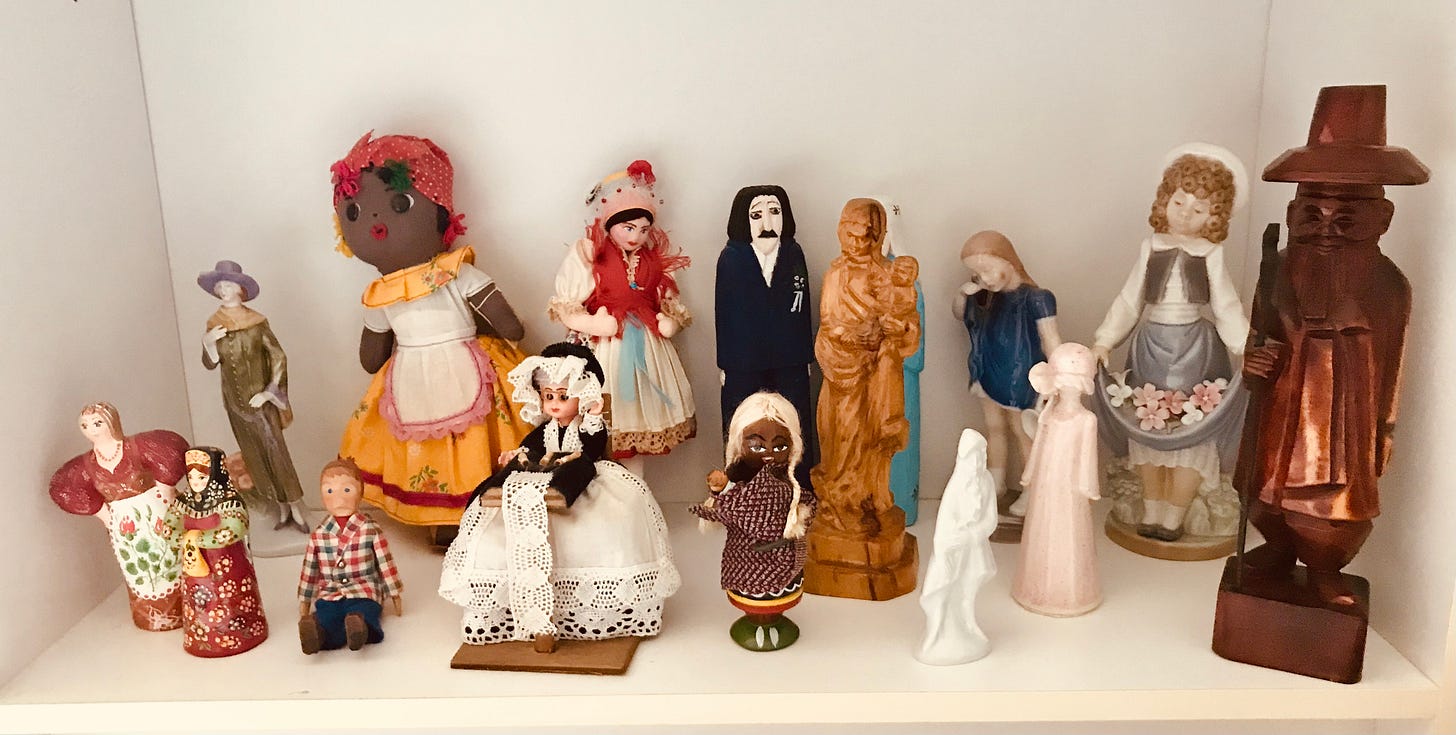
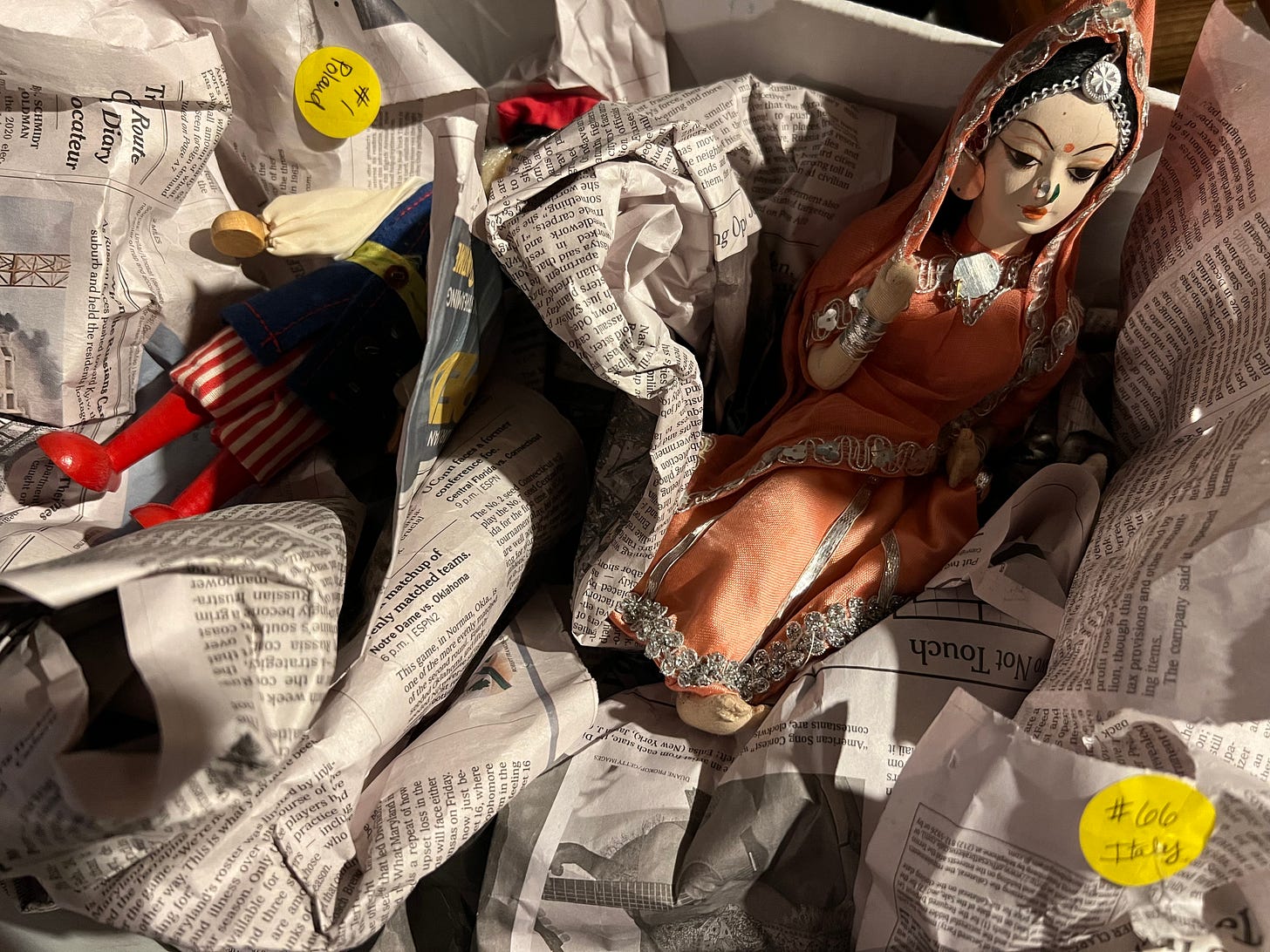
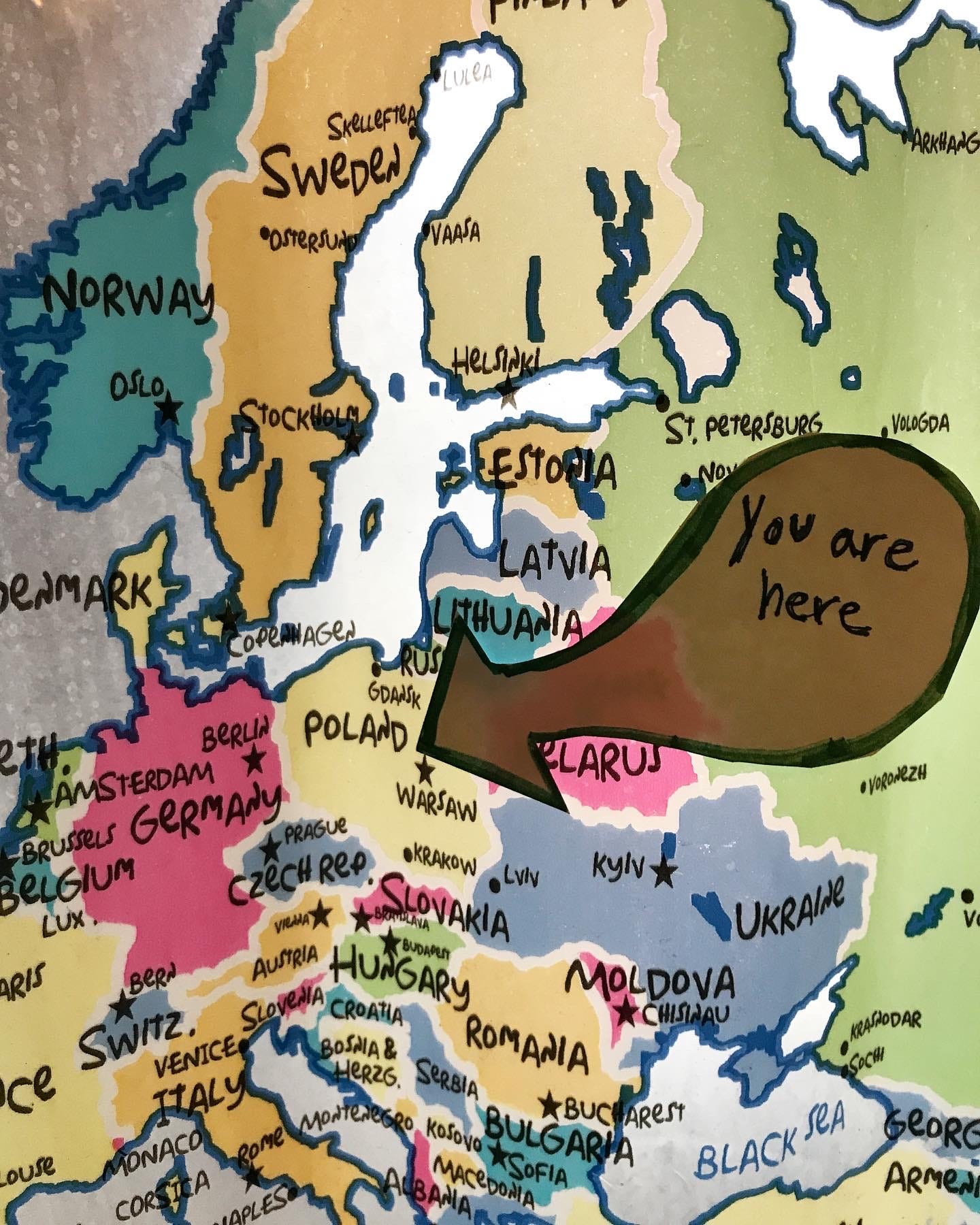
Very good! It's great that the dolls are a starting point for learning more about their countries of origin. I actually live in Poland but in the north, and had not heard of haluski before - will investigate. I am Portuguese - do you have a doll from Portugal? :)
I love this family collaboration! How wonderful that your daughter came up with the global dinners idea!